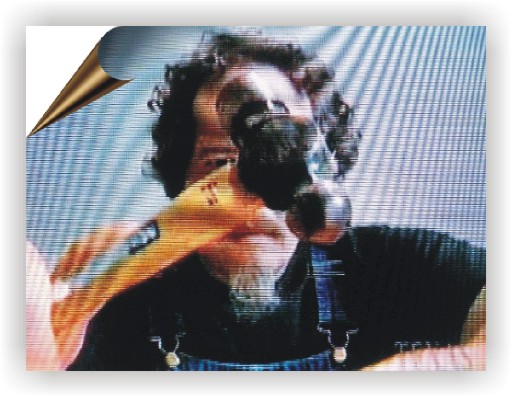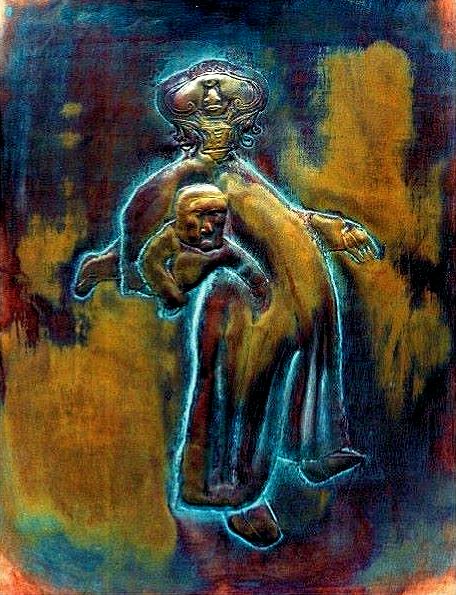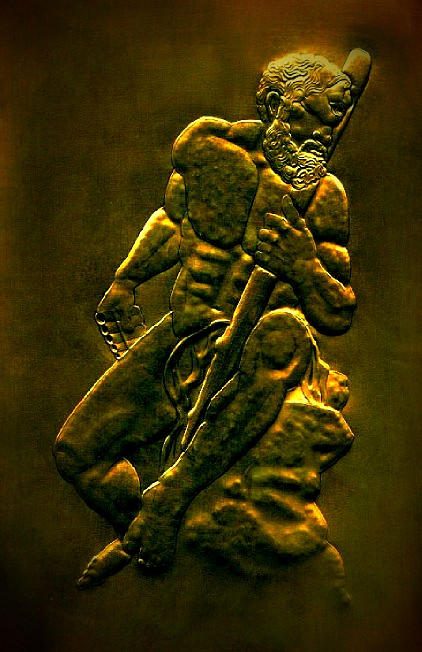

David Smith, "Working in Vane." Photo by Dan Strickland.
Courtesy Texas Country Reporter/Phillips Productions. © 2006.
Making copper weathervanes is like alchemy, in that there is a division of the work into practical effort and visionary reward. George Washington, Paul Revere and Thomas Jefferson were, among other things, outstanding coppersmiths. Washington made for his Mount Vernon home a famous weathervane he called "Dove of Peace." Paul Revere, a coppersmith par excellence, made many weathervanes and the world's largest copper company today--Revere Copper--is still owned by his family. (All sheet copper I use in my work has a purity of 99.999%, and is made by Revere Copper Company.) Revere also fabricated a bronze (an alloy of copper) cannon for the USS Constitution. Thomas Jefferson, being the brilliant artist, innovator, and inventor that he was, took the weathervane a step further: he made a copper weathervane for his Monticello home that featured an indoor indicator arrow that he could view from his living room.There are no books on how to make copper weathervanes nor are there any standard tools. My only tools consist of an 8- and 16-ounce ball-pein hammer, an oak stump on which I hammer my work, duckbill shears for cutting sheet copper, a propane torch and silver alloy solder. Occasionally I'll look for a "found object"--a piece of metal with a unique form--for making certain textures. That's all there is to it. In all my weathervane designs I adhere to the form follows function principle associated with modern architecture and industrial design in the 20th century. The principle is that the shape of a building or object should be primarily based upon its intended function or purpose.
Form follows function: Detail of a grotesque weathervane by David J. Smith. (2002)
Private residence, Sandwich, Massachusetts.
Some interesting facts about copper:
--David J. Smith
Sugar Land, Texas

Above: "Psilocybe hoogshagenii." 2013. In the collection of Dr Gaston Guzman, Xalapa, Vera Cruz, Mexico.
Hammered copper rendering of the psychedelic mushroom Psilocybe hoogshagenii. Copper's malleability and natural range of colors lends itself well to nature studies, as seen here with these sculpted Psilocybe mushroom garden ornaments.

Above: "Blueberry Pancake Supper." 2001.
Hammered sheet copper relief with verdigris patina. Private collection, Manhattan, New York.

Above: "Fury." 2001. (9.5" x 11")
Hammered sheet copper relief with verdigris patina. Private collection, Manhattan, New York.

Above: "Cyclops." 2001. (8.5" x 21")
The first copper piece I ever made. Hammered sheet copper relief with bronze patina.
Private collection, Manhattan, New York.In mythology, the cyclops were metalsmiths who forged Zeus' principal weapon--lightning bolts. Given their penchant for blacksmithing, many scholars believe the legend of the cyclops' single eye arose from an actual practice of blacksmiths wearing an eyepatch over one eye to prevent flying sparks from blinding them in both eyes.

Designated a Texas Original by The Texas Commission on the Arts
Description text and images Copyright © 2001-2015 David Smith